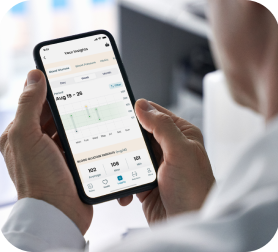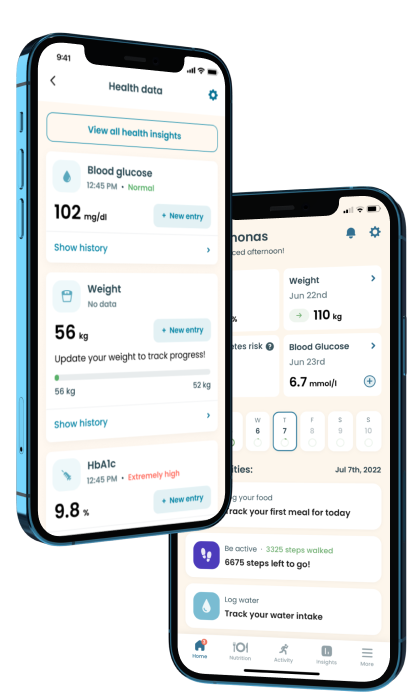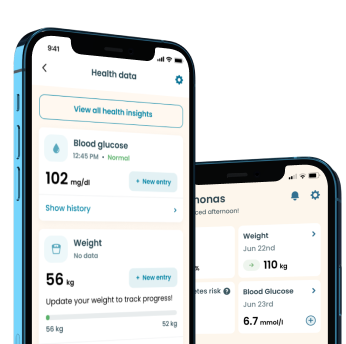Mucinex and Diabetes: How Does This Drug Affect Diabetes?

Having diabetes usually demands extra carefulness on what you eat, how you live, and the types of medications you take. Generally, diabetes becomes an underlying condition that may interact negatively with other diseases and medications if not properly managed. Therefore, there’s a major need for people with diabetes to be extremely careful when dealing with other illnesses like cold or flu.
A common drug that people with diabetes take when down with flu or cold is Mucinex. The drug is one of the most popular and recommended cold or flu medications. Namely, it’s effective against the condition and is known to grant instant relief. Nevertheless, Mucinex is often associated with several side effects that diabetics may be curious about.
There have been claims that the medication and its variants lead to high blood sugar, a red alert for people with diabetes.
However, are there any justifications for these statements?
Does Mucinex genuinely have any side effects that diabetics may want to be careful about?
Is there any expert study that proves that the drug naturally raises blood glucose and leads to other complications?
This thorough guide answers all these questions and more to educate people on the drug’s safety for diabetics.
Mucinex Variants
Mucinex, which contains guaifenesin, is undoubtedly highly effective for treating colds and the flu. This over-the-counter expectorant works well for related conditions like sore throat, bronchitis, common cold, allergies, and respiratory disorders. More specifically, the medication is an expectorant that gets rid of congestion by thinning and releasing mucus that blocks the airway.
However, its supposed association with high blood pressure has placed a question mark on its suitability as one of the safe OTC cold medicines for diabetics.
There are two major types of this medication — the Mucinex and the modified version known as the Mucinex DM. Summarily, the difference between the two is an additional ingredient in the latter, dextromethorphan.
Dextromethorphan is certified to be an effective cough suppressant. Its addition to the normal Mucinex only makes it better and well suited for people with incessant coughing and breathing problems. Overall, Mucinex DM has been accepted as a major variant of the Mucinex medication as it’s considered a more active version of the drug.
Another Mucinex variant is the Mucinex D, which contains two ingredients — pseudoephedrine and guaifenesin. Pseudoephedrine is a decongestant that reduces and prevents nasal congestion and promotes free mucus and airflow in the sinus. It does this by triggering a constriction of the blood vessels in the nasal cavity.
There are other Mucinex variants like Mucinex Sinus Max, which contains guaifenesin (an expectorant), acetaminophen (for headache relief), and phenylephrine (a nasal decongestant).
Take a quiz
Discover what Klinio app can do for you
Healthy diabetes meal plan crafted just for YOU

Personalized workouts with no equipment needed

Track your progress with smart tracking tools

Forms and Dosage of Mucinex and Mucinex DM
There are different forms of Mucinex and Mucinex DM, with varying effectiveness. Let’s throw more light on this.
Regular Tablets
Mucinex and Mucinex DM come as regular tablets that you take, just like a regular drug. The recommended dosage for an adult is two doses every 12 hours.
It’s not necessary to take four tablets in 24 hours. However, you must not take more than four to prevent an overdose and trigger unwanted reactions. It’s advised that people under 12 years shouldn’t take the regular tablets as it’s considered too strong for kids.
Maximum-Strength Tablets
Mucinex and Mucinex DM Maximum-Strength tablets are special and more potent tablets that are more effective in handling cough and the flu. They interact with other conditions like diabetes more quickly and may lead to complications following improper administration.
The Maximum-Strength tablets of both variants contain double the ingredients in the regular alternatives. The recommended consumption of this dose is half of the regular tablets — one tablet in 12 hours and no more than two doses in 24 hours.
The packaging of the regular and Maximum-Strength tablets is similar in both branding and size. The only difference is a red banner on every maximum-strength package with the 'Maximum-Strength' description. Therefore, you must ensure that you pay heed to the packaging when purchasing a Mucinex medication to ensure you get the right one at all times.
Syrup
Mucinex and Mucinex DM are also available in the syrup variant. There’s one dedicated to adults and another for kids below 12 years. The Adult Syrup is simply the liquid version of the Maximum-Strength tablets, so it’s up to you to choose the one you’re more comfortable with.
Children below 11 years can take kids' syrup form for cold and flu relief. However, it should only be administered on a doctor's recommendation. The kids' syrup usually has a 'Mucinex Children's label to enable distinction.
Major Side Effects of Mucinex
Mucinex and Mucinex DM don’t exactly cause any real problem to the health of people that don’t have an underlying condition. It’s FDA certified and can’t lead to serious complications at the recommended dose. The table below outlines some of the side effects of Mucinex and Mucinex DM when not taken according to expert recommendations.
| Side Effects | Mucinex | Mucinex DM |
| Constipation | No | Yes |
| Diarrhea | Yes | Yes |
| Dizziness | Yes | Yes |
| Drowsiness | Yes | Yes |
| Headache | Yes | Yes |
| Nausea, vomiting, or both | Yes | Yes |
| Stomach pain | Yes | Yes |
| Rash | Yes | Yes |
| Confusion | No | Yes |
| Jitteriness, agitation, or restlessness | No | Yes |
| Kidney stones | Yes | Yes |
| Very severe nausea, or vomiting, or both | No | Yes |
The Relationship Between Mucinex and Diabetes
From the side effects mentioned in the previous section, it’s obvious that Mucinex and all its variants could lead to diabetes-related conditions. Mucinex is a relatively safe drug and shouldn’t cause any problem even if you have diabetes as long as you follow your doctor's prescription. On its own, Mucinex will only raise blood sugar levels if you consume it in high doses.
However, poor drug interactions with diabetes medication of any form could lead to severe complications. While it may get rid of the cold flu, it could increase blood sugar and cause DKA (diabetic ketoacidosis), leading to liver disease and other complications.
Below are some conditions that people with diabetes can develop when there’s poor interaction with their condition or medications. For easy understanding, we’ll treat its effects on individual body systems.
The Cardiovascular System
Mucinex could pose a serious risk of cardiovascular conditions if you consume it beyond the normal recommendation. However, Mucinex DM is the major culprit for diabetes complications. It’s been associated with causing a series of cardiovascular conditions due to the pseudoephedrine ingredient included in its composition. The substance, when over consumed, can lead to an increase in blood pressure.
Another way the drug affects people with diabetes is by stimulating the heart tissues’ beta-1 adrenergic receptors, which leads to both chronotropic and inotropic effects. This means that the drugs that could lead to a sudden rise in cardiac output, workload, as well as oxygen requirements.
In the same vein, the drug could trigger and stimulate the vascular alpha-1 adrenergic receptors surrounding the heart, leading to arrhythmia, hypertension, cerebral vasculitis, hypertension, tachycardia, myocardial infarction, cardiac arrest, palpitations, and possibly death.
Since people with diabetes are already at risk of developing cardiovascular diseases like high blood pressure and coronary complications, going for Mucinex DM may not be the best option. Mucinex would be a better alternative, but patients must ensure that they never take more than the required dose of the Mucinex drugs to avoid the possibility of any related complication.
The Nervous System
Another major area where Mucinex and Mucinex DM may lead to complications is their negative impact on the nervous system. The possibility of this happening is slim, and people with diabetes will need to consume both drugs in a large dose to experience any effect. In summary, Mucinex DM poses a higher nervous system risk than Mucinex due to its active ingredients.
The negative impact of Mucinex on the nervous system include dizziness, headache, and drowsiness. However, with Mucinex DM, the symptoms are more likely to worsen and include feelings of agitation, confusion, restlessness, and chills. Still, it’s important to note that these effects can only happen when there’s a drug overdose of Mucinex DM.
Another concerning health problem that Mucinex DM could cause is the buildup of kidney stones, potentially leading to renal failure.
The Digestive System
Mucinex could negatively affect the digestive system if you have diabetes and consume any of the medication variants in high doses. The drugs could upset your gastrointestinal functionality and unsettle your microbiome.
Mucinex DM is again the major culprit and could induce stomach pain, diarrhea, decreased appetite, and vomiting. You could also experience increased heartburn and abdominal bloating.
The good thing, though, is that these conditions are majorly temporary, and you should get back to normal when you pause the drug use.
Interactions with Medications
There are many conditions that an overdose of Mucinex DM can cause if you have diabetes. A major concern is how the drug and its variants interact with diabetes medications.
People with diabetes who exercise more constantly may live without taking diabetes medication and may not have any real problem when they take Mucinex and Mucinex DM. However, most diabetics usually depend on treatment, and experts believe that a wrong interaction can lead to a string of poor effects.
Dextromethorphan is the active ingredient in Mucinex DM that could interact with certain diabetes medications (not all). The effect could lead to a spike in blood sugar and heart rate, fever, overactive reflexes, and agitation.
These symptoms aren’t very common, but they do happen. Hence, diabetics should discuss them with their doctor before including Mucinex DM as part of their medication for treating cold and flu.
How to Effectively Use Mucinex and Mucinex DM for Diabetes
As can already be seen from the different conditions that Mucinex and Mucinex DM present to people with diabetes, it’s important to know whether these drugs are the right cold and flu management medications to opt for.
As a diabetic, you shouldn’t encounter any real problem with Mucinex if you take the recommended dosage at the right time. Mucinex won’t increase blood pressure or negatively affect blood glucose levels if you take the recommended dosage outlined by your physician.
On the other hand, taking Mucinex DM may have a string of effects, especially with how it reacts to diabetes medications. They could trigger a spike and force you to treat high blood pressure.
The bottom line when it comes to taking Mucinex and Mucinex DM is to discuss with your healthcare provider whether the variants are the right option to go for to treat your cold or flu. Also, a doctor will help you determine the right dosage that works for you.
Exercising also plays a crucial role in using Mucinex or any other medication for diabetes. Regular moderate exercise will make you less dependent on diabetes drugs, eliminating the possibility of poor reactions to drugs for treating other conditions.
You should incorporate moderate to intense exercise patterns depending on your endurance level and body weight. You could choose brisk walking, jogging, running, and high-Intensity interval training to keep your weight at the fitness level and lower your blood pressure.
Conclusion
Mucinex and its variants (Mucinex DM) are popular medications you may need as a diabetic. However, it’s crucial to know exactly how they interact with your condition and current medication. For one, diabetes medication could interact poorly with other drugs and compromise health and the body.
One way to reduce your need for diabetes medication and subsequent poor reaction to other treatments is by incorporating a healthy lifestyle. Exercising is extremely paramount, and so is the type of food you eat. You must always eat the right food by incorporating the right diet for your condition. This is where a diabetes meal planner comes in handy.
Using a virtual health assistant like Klinio can go a long way to help you plan the right meal to eat. Notably, eating right can do a world of good, like decreasing blood pressure and helping you lose weight in the long term.

Download Klinio app!
Get more by downloading our free Klinio App. Analyze your health, form new habits and manage your diabetes anytime, anywhere.
OR
SCAN QR CODE



GET THE APP









